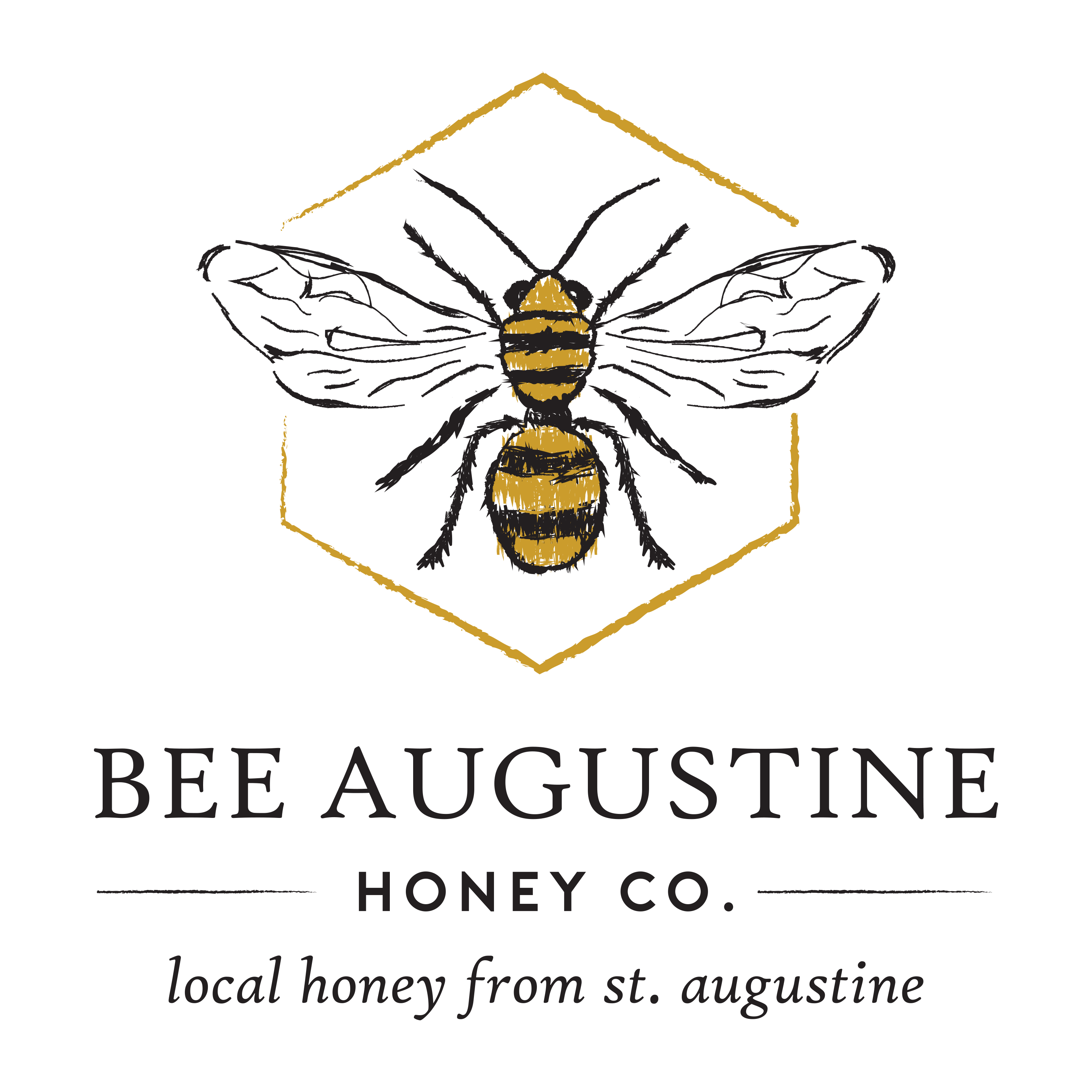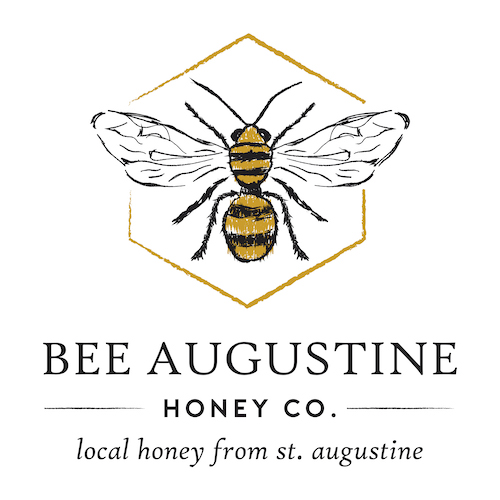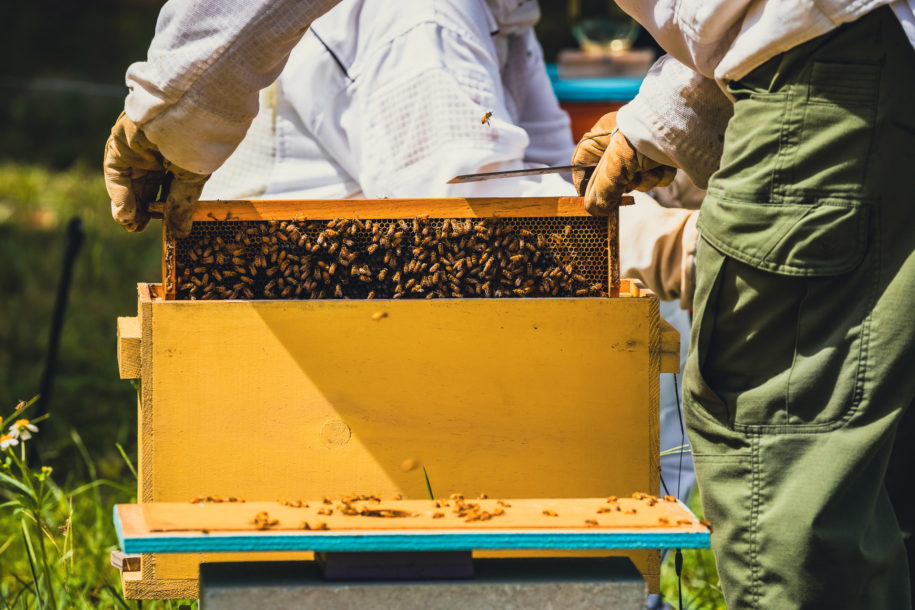Top 10 Tips For Backyard Beekeeping
So, You Want To Be A Beekeeper?
Whether you want to strengthen the pollinator population in your neighborhood, harvest and sell local honey from St. Augustine, or learn more about how important honey bees are to the biodiversity of our ecosystem, beekeeping can be a fun and rewarding experience. In fact, new beekeepers are popping up each and every day.
Before you light that smoker and start "popping lids" here are a few tips for successfully keeping honey bees in your backyard!
1. Knowledge Is Power
Like most hobbies beekeeping requires a lot of research and homework. There are many decisions to make in and outside of the hive and knowing when and what to do for your colonies is critical. Honey bees don’t come with directions. Think about joining local beekeeping associations and clubs to learn what other beekeepers are doing in your area to manage honey bee colonies. As with most topics, there is no shortage of online information about raising healthy honey bees.
Last Fall, Bee Augustine Honey Co. hosted Backyard Beekeeping Classes With Bo Sterk, Master Craftsman Beekeeper, Past-President of the St. Johns County Beekeepers Association and Founder of Bees Beyond Borders.
2. Picking The Right Spot For Your Honey Bees
Picking the right spot to start your apiary is very important. When placing honey bee hives in St. Augustine, Fl make sure that they are not in total shade and that the early morning sun hits the hive(s). This will get the bees out early to start foraging. In addition to the placement of hives in your apiary, you should check with local authorities to find out what the rules and restrictions are for backyard beekeeping in your area. Proper planning can go a long way in determining how successful you are in this endeavor, so getting help from an existing beekeeper can be beneficial in creating the perfect apiary.
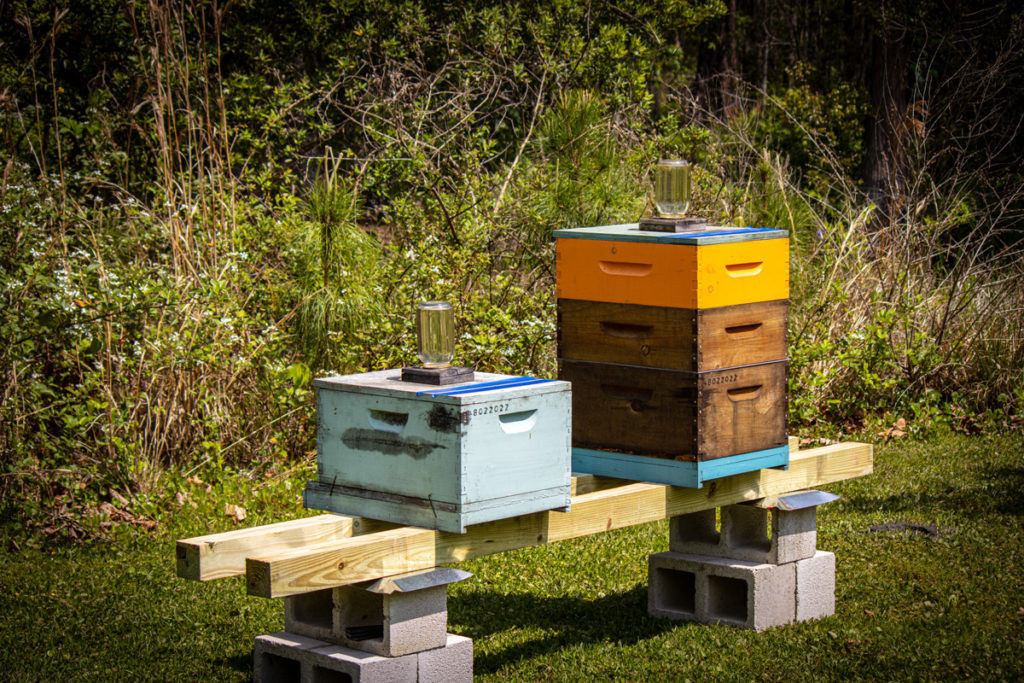
3. Honey Bee Hives, Stands, And Setups
One of the first decisions that you will have to make when deciding to become a beekeeper is what type of hive(s) will you use. There are plenty of choices on styles, but the most popular honey bee hives tend to be Top Bar Hives, Langstroth Hives, and Warre Hives. The video below details an extra layer of defense to pests, specifically ants. These types of decisions are extremely important to the overall success of your honey bee colony.
4. Essential Beekeeping Tools And Gear
Personal Protection Equipment (PPE) and hive tools make beekeeping easier and come in a variety of styles, and sizes. Below is basic beekeeping equipment that you may want to get before keeping honey bee colonies.
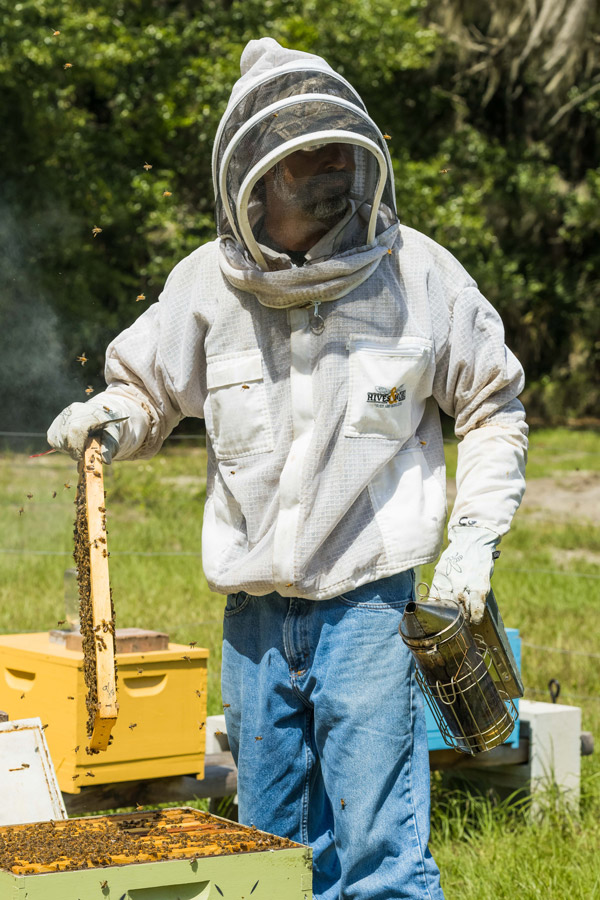
People have been using smoke to manage bees for thousands of years. A bee smoker works by masking alarm pheromones that bees emit when they sense danger. This enables the beekeeper to safely and efficiently inspect the hive and is considered an essential tool in beekeeping. You may not need smoke for every hive inspection but there will be a time when you need the trusty bee smoker. Fuels commonly used in a bee smoker include pine straw (a Bee Augustine Honey Co. favorite), wood pellets and burlap.
Another essential tool for beekeeping is the Hive Tool. This piece of equipment is instrumental in managing and inspecting bee hives and comes in a variety of styles and colors. Honey Bees use propolis and lots of it! A hive tool can be used for the following;
- Pry open and separate hive boxes for inspections.
- Scrape excess propolis away inside the hive.
- Pulling frames from the hive.
A Beekeeping Suit or Jacket will greatly reduce the threat of bee stings and instills more confidence in the beekeeper. Although you may get to a point where you are comfortable being in the apiary without any protection, there will be times when you are going to want one and need one.
At the very least, Bee Veils should be worn when working with honey bees to protect your eyes and face. They come in a wide variety of styles, materials and colors.
Beekeeping Gloves are a matter of preference, but add a level of protection between you and the honey bees. While some beekeepers prefer the heavy duty versions of beekeeping gloves, other beekeepers decide to use no gloves at all. As with many things regarding beekeeping this decision is a personal choice and varies from beekeeper to beekeeper.
5. Buying Honey Bees
Proper planning is required to purchase honey bees, as it can tend to be a seasonal thing. Most large-scale honey bee suppliers tend to sell honey bees in the Spring. Whether you buy them locally or have them shipped you will need to determine if you want to purchase a package of honey bees or nucleus colony (Nuc) of honey bees. This will depend on your beekeeping goals and what type of equipment you have decided to utilize. Seek advice from other beekeepers to see what they are doing to make a more informed decision. Local beekeeping associations group together to purchase large quantities, so check with them to see if they have anything scheduled or know of local beekeepers that sell honey bees.
The video above shows the process of moving a Nuc into a 10 Frame Langstroth Hive.
6. Inspecting Honey Bee Hives
Closely monitoring your honey bee colonies is very important for a number of reasons. Conducting inspections on a regular basis can tell you how well your colony is doing; is there a queen present and is she laying eggs? What does your mite count look like and do you need to treat for varroa mites? Is your colony of honey bees growing so much that they need to be split before they swarm? Timing is a critical part of beekeeping and inspecting honey bee colonies on a regular basis is the only way to stay on top of current and future situations that could be detrimental to your colonies and surrounding beekeepers’ colonies.
Do you want to learn more about inspecting hives and managing honey bee colonies? Check out our backyard beekeeping series.
7. Honey Bee Pests And Pathogens
There are numerous problems that beekeepers have to deal with in order to keep a hive healthy. Pests and pathogens are two of the most critical issues for honey bee colonies. In addition to bears, skunks, mice, and ants, honey bees are plagued with small hive beetles, varroa mites, and in some cases pathogens, like American Foul Brood. Regular inspections, proper treatment plans, and preparedness are essential in maintaining healthy honey bee colonies. Some beekeepers choose not to treat their honey bees, which can create an even larger problem when those infected bees come into contact with other honey bees, thus reducing the pollinator population.
Good beekeeping starts with closely monitoring honey bee colonies and treating them when necessary.
8. Supers And Honey Production
Supers are used to collect honey and are placed above the brood chamber. If you have been conducting regular inspections and treating your honey bees when issues present themselves, this is the moment that you have been waiting for. Honey Harvest Time! There are many methods to choose from when it comes to how you will harvest and bottle your honey. Whether you choose a kitchen knife and bucket or a more advanced technique like an extractor, harvesting honey is one of the most rewarding processes in beekeeping.
9. Requeening Honey Bee Colonies
At some point, all beekeepers have to requeen a colony whether they want to or not. Knowing when to requeen a colony is a pretty important part of beekeeping. Some beekeepers requeen their colonies every year to help with production and temperament. Most of the calls that we get from beekeepers looking for mated queens are due to swarming. Requeening a colony also reduces swarm tendencies in a hive because the new, younger queen is working at full capacity.
The video above demonstrates how to introduce a mated queen to a honey bee hive.
10. Maintaining A Healthy Honey Bee Apiary
If you regularly inspect your hives and treat them when problems occur, you will be ahead of the game in maintaining a healthy honey bee apiary. Other things to consider are water and foraging resources, and ventilation. Don’t place your hives in complete shade, if possible make sure that the sun hits the honey bee colonies first thing in the morning.
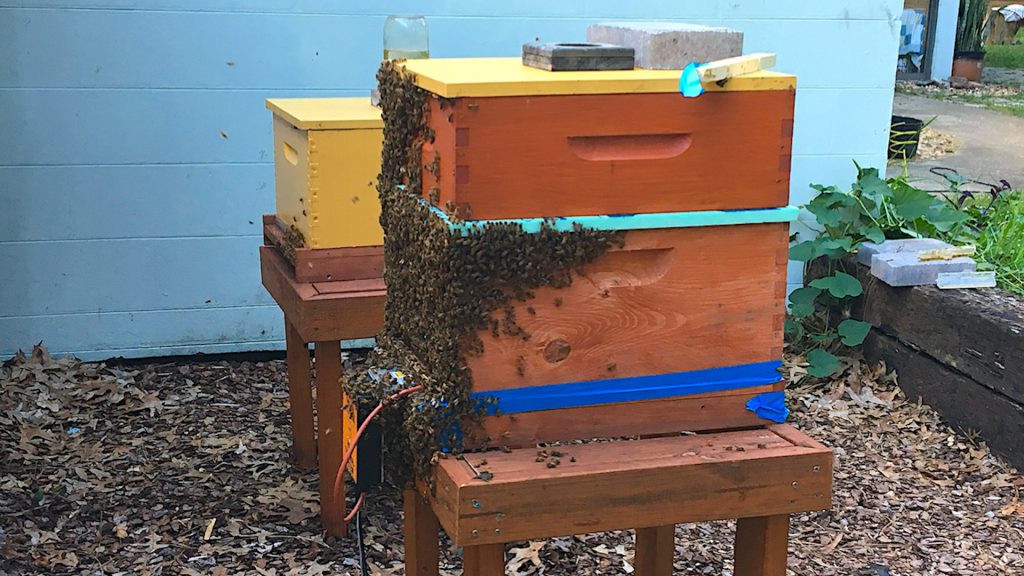
The image above depicts a heat treatment for varroa mites, which is one of many ways to maintain a healthy honey bee apiary.
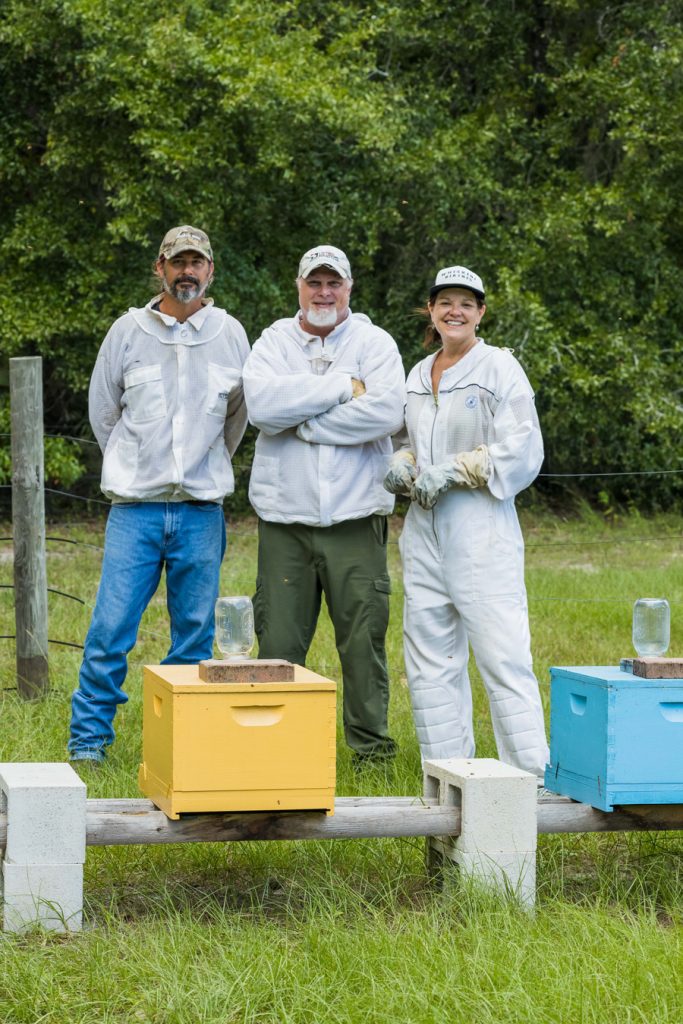
Want Some Local Honey?
Bee Augustine Honey Co. is proud to provide our friends, family, local residents and visitors to the Nation’s oldest City with 100% pure local honey from St. Augustine. If you are interested in reserving some of our local honey, please enter your information below and we will let you know when the Spring 2023 Harvest is ready for you.
